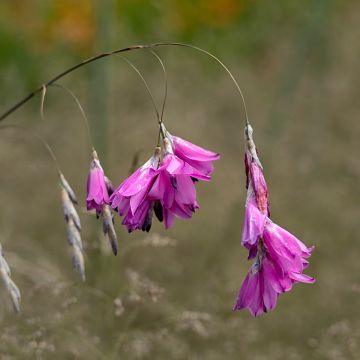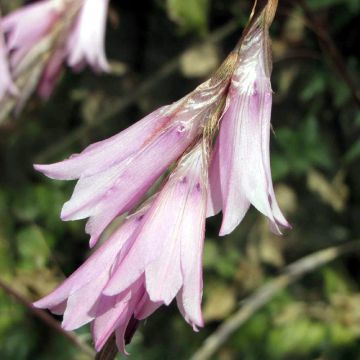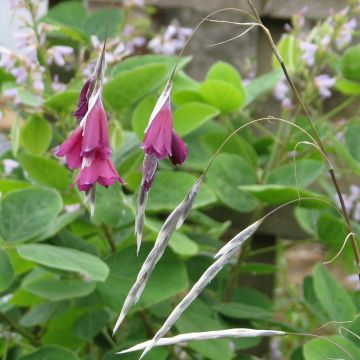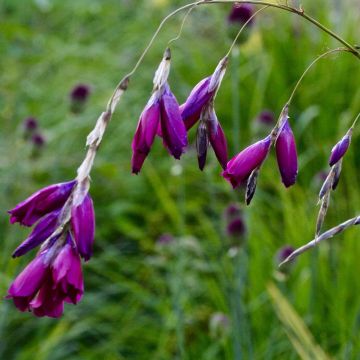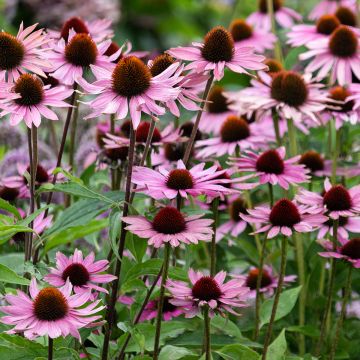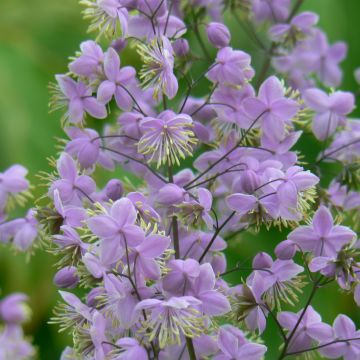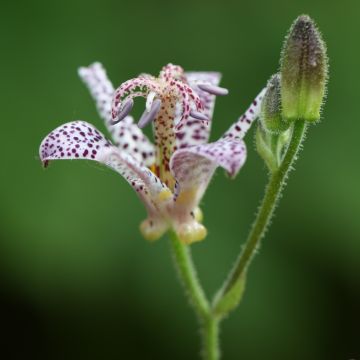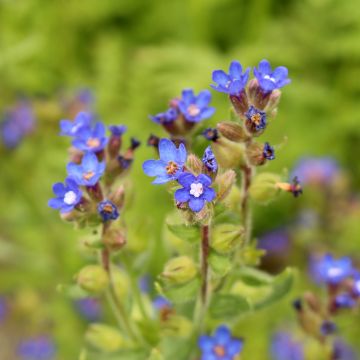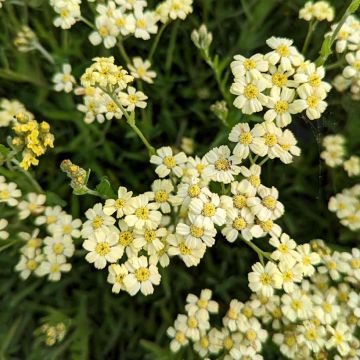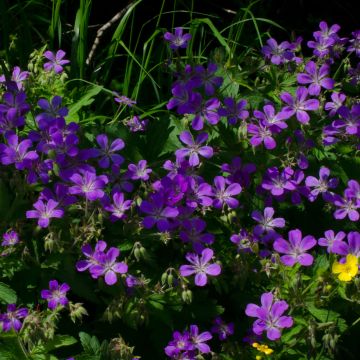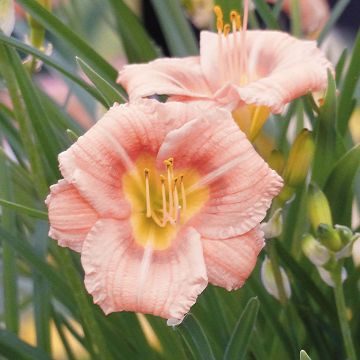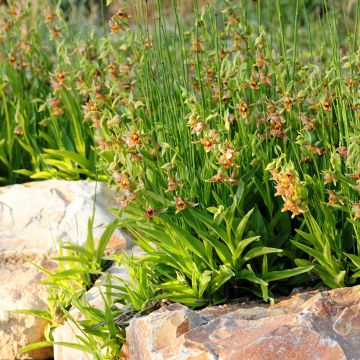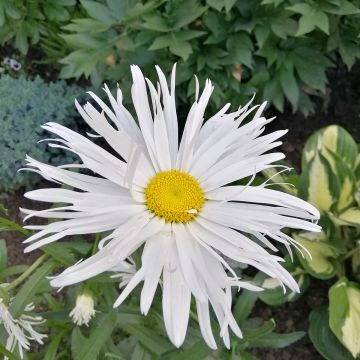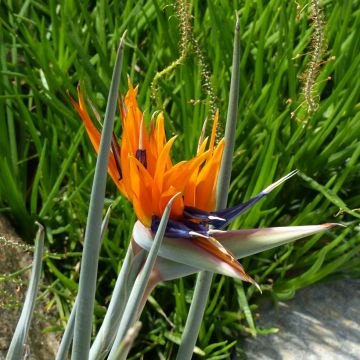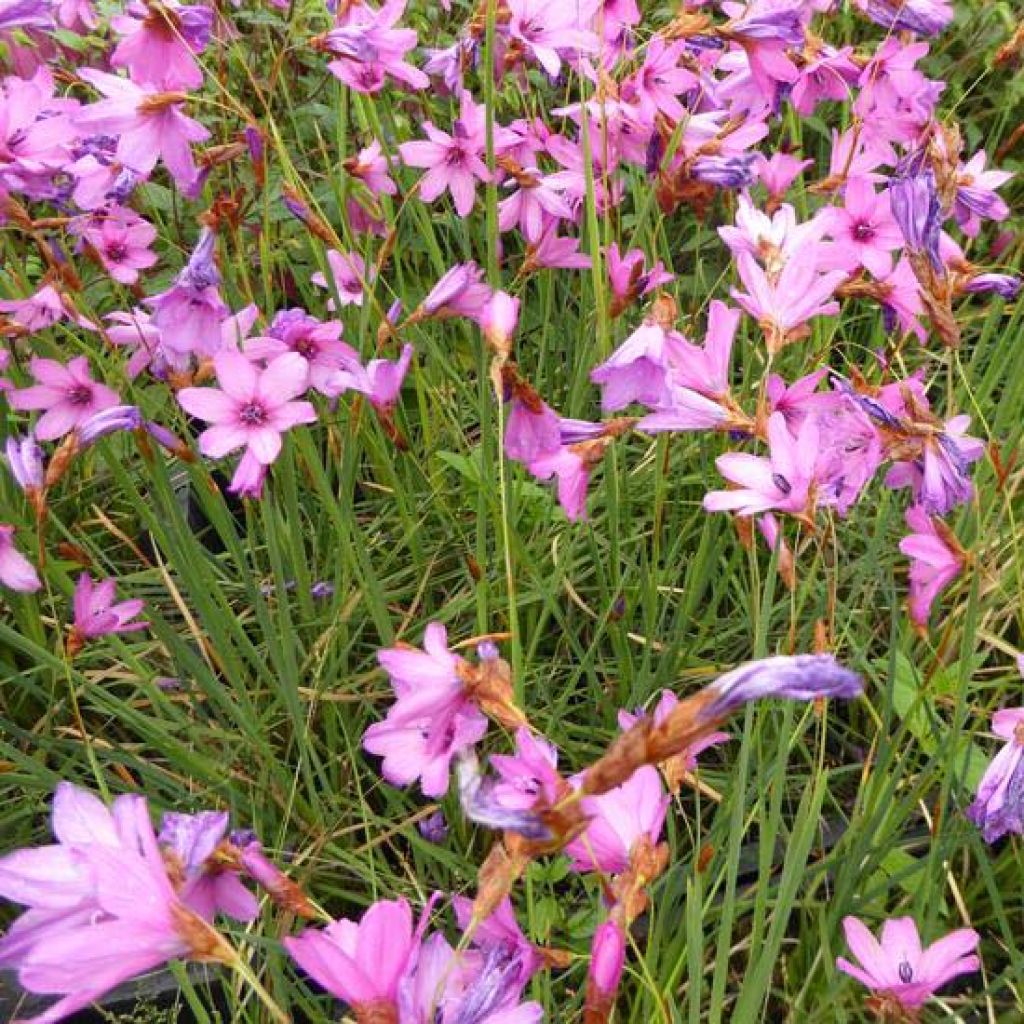

Canne à pêche des anges - Dierama trichorhizum
Dierama trichorhizum
Dierama trichorhizum
Angel's fishing Rod, Wedding bells
Young plant received and replaced by the website (thank you for the excellent after-sales service). Since planting last March, the young plant remains green but has not moved much yet. I am monitoring and waiting for pleasant surprises.
Mika V., 12/05/2023
Why not try an alternative variety in stock?
View all →This plant carries a 12 months recovery warranty
More information
We guarantee the quality of our plants for a full growing cycle, and will replace at our expense any plant that fails to recover under normal climatic and planting conditions.
From €5.90 for pickup delivery and €6.90 for home delivery
Express home delivery from €8.90.
Does this plant fit my garden?
Set up your Plantfit profile →
Description
Dierama trichorhizum is part of a genus of perennials poetically called Angel's Fishing Rods. They are South African plants resembling grasses that offer a delightful summer flowering with pendant bell-shaped flowers hanging from long, flexible, and arching stems. This dierama is probably the most compact of all. It is hardier than its cousins. Its flowering, while not spectacular, lasts for two months in summer. Hanging from long arching stems, lavender-pink flowers with hints of mauve sway above a tuft of delicate, evergreen foliage. In the garden or in pots, dieramas are appreciated for their infinitely graceful flowering. It will work wonders in an alpine rockery.
Dierama trichorhizum (synonym Ixia trichorhiza) is an evergreen cormous plant belonging to the Iridaceae family. It is native to sunny and humid meadows in Lesotho and Swaziland in South Africa. It can be found, for example, in the Drakensberg mountains, which experience rainy summers and dry winters. It resembles a grass, with an upright clump of long grey-green leaves, reaching 15cm (6in) in height and, after many years, 35cm (14in) in diameter at the base. From June to August, long slender and sturdy stems up to 50cm (20in) long emerge from the foliage. They bear branched spikes at their ends. Each branch carries 1 to 3 campanulate flowers, with lanceolate petals in shades of lavender-pink with hints of mauve, which fade beautifully to an almost bluish hue, enclosed in a coppery calyx. The nectar-rich flowering attracts many pollinating insects. The fertilised flowers give way to small ovoid capsules containing numerous small, fairly hard brown seeds that will germinate after the winter cold. Plants grown from seeds will flower after 5 to 7 years of cultivation.
Invite this little wonder into your garden and protect it from excessive humidity in winter by covering its base with a thick mulch. It deserves a prime spot, whether in a pot on a patio, in a cool but sunny rockery, or near a water feature. Dierama trichorhizum is hardy down to -12°C (10.4°F) in dry soil during winter. It is very well adapted to coastal areas, and withstands the wind carrying salty spray. This little perennial looks superb alongside grasses (such as small Miscanthus, Eragrostis, Carex dipsacea) along a pathway, especially when the light shines through its flower-filled foliage. Near a pond, it can be paired, for example, with ribbons of bergenia, Gomphostigma virgatum 'Silver Butterfly', or small border daylilies in shades of pink or white.
Report an error about the product description
Dierama trichorhizum in pictures
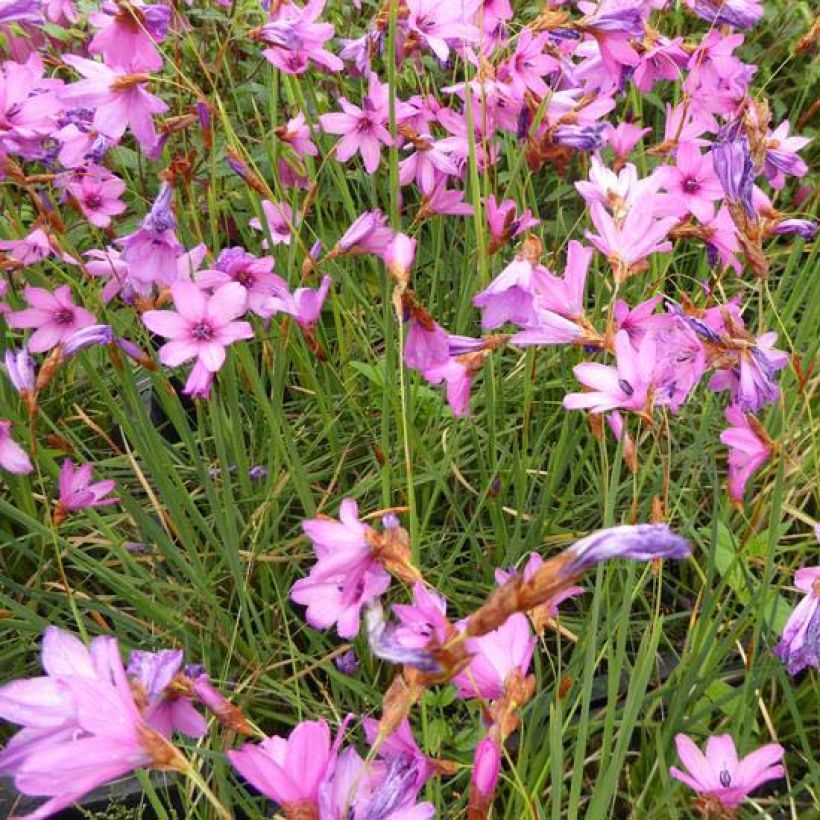

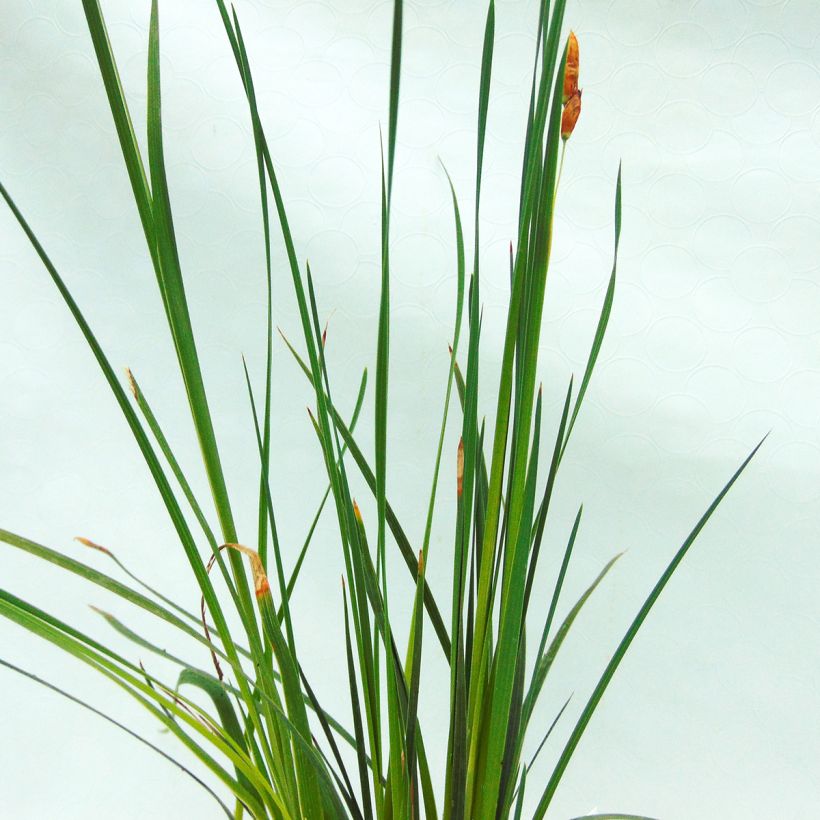

Flowering
Foliage
Plant habit
Botanical data
Dierama
trichorhizum
Iridaceae
Angel's fishing Rod, Wedding bells
South Africa
Other Dierama
Planting and care
Plant in the sun, in light, well-worked, humus-rich soil, enriched with coarse sand, and not necessarily too fertile. It prefers and requires soil that remains moist in summer, but it is much more resistant to winter cold in dry soil. Drainage must be carefully maintained to prevent corm rot in waterlogged soil during winter. Its cultivation is slightly delicate during the first few years, when it will require a lot of attention, but once well established, the plant is less water-demanding and will withstand normal winters. Hardy in theory to -17°C (1.4°F), we still recommend protecting your plant in winter with a thick mulch. You can also grow it in large pots that you can shelter over winter. In pots, monitor watering during the growing season. During the dormancy period in winter, the soil should remain just moist, never waterlogged. Dierama does not appreciate pruning (except for removing faded flowers), as it slows down its growth.
It can be propagated by sowing or by dividing clumps after flowering. This plant does not like to be moved around too much.
Planting period
Intended location
Care
-
, onOrder confirmed
Reply from on Promesse de fleurs
Summer flowering perennials
Haven't found what you were looking for?
Hardiness is the lowest winter temperature a plant can endure without suffering serious damage or even dying. However, hardiness is affected by location (a sheltered area, such as a patio), protection (winter cover) and soil type (hardiness is improved by well-drained soil).

Photo Sharing Terms & Conditions
In order to encourage gardeners to interact and share their experiences, Promesse de fleurs offers various media enabling content to be uploaded onto its Site - in particular via the ‘Photo sharing’ module.
The User agrees to refrain from:
- Posting any content that is illegal, prejudicial, insulting, racist, inciteful to hatred, revisionist, contrary to public decency, that infringes on privacy or on the privacy rights of third parties, in particular the publicity rights of persons and goods, intellectual property rights, or the right to privacy.
- Submitting content on behalf of a third party;
- Impersonate the identity of a third party and/or publish any personal information about a third party;
In general, the User undertakes to refrain from any unethical behaviour.
All Content (in particular text, comments, files, images, photos, videos, creative works, etc.), which may be subject to property or intellectual property rights, image or other private rights, shall remain the property of the User, subject to the limited rights granted by the terms of the licence granted by Promesse de fleurs as stated below. Users are at liberty to publish or not to publish such Content on the Site, notably via the ‘Photo Sharing’ facility, and accept that this Content shall be made public and freely accessible, notably on the Internet.
Users further acknowledge, undertake to have ,and guarantee that they hold all necessary rights and permissions to publish such material on the Site, in particular with regard to the legislation in force pertaining to any privacy, property, intellectual property, image, or contractual rights, or rights of any other nature. By publishing such Content on the Site, Users acknowledge accepting full liability as publishers of the Content within the meaning of the law, and grant Promesse de fleurs, free of charge, an inclusive, worldwide licence for the said Content for the entire duration of its publication, including all reproduction, representation, up/downloading, displaying, performing, transmission, and storage rights.
Users also grant permission for their name to be linked to the Content and accept that this link may not always be made available.
By engaging in posting material, Users consent to their Content becoming automatically accessible on the Internet, in particular on other sites and/or blogs and/or web pages of the Promesse de fleurs site, including in particular social pages and the Promesse de fleurs catalogue.
Users may secure the removal of entrusted content free of charge by issuing a simple request via our contact form.
The flowering period indicated on our website applies to countries and regions located in USDA zone 8 (France, the United Kingdom, Ireland, the Netherlands, etc.)
It will vary according to where you live:
- In zones 9 to 10 (Italy, Spain, Greece, etc.), flowering will occur about 2 to 4 weeks earlier.
- In zones 6 to 7 (Germany, Poland, Slovenia, and lower mountainous regions), flowering will be delayed by 2 to 3 weeks.
- In zone 5 (Central Europe, Scandinavia), blooming will be delayed by 3 to 5 weeks.
In temperate climates, pruning of spring-flowering shrubs (forsythia, spireas, etc.) should be done just after flowering.
Pruning of summer-flowering shrubs (Indian Lilac, Perovskia, etc.) can be done in winter or spring.
In cold regions as well as with frost-sensitive plants, avoid pruning too early when severe frosts may still occur.
The planting period indicated on our website applies to countries and regions located in USDA zone 8 (France, United Kingdom, Ireland, Netherlands).
It will vary according to where you live:
- In Mediterranean zones (Marseille, Madrid, Milan, etc.), autumn and winter are the best planting periods.
- In continental zones (Strasbourg, Munich, Vienna, etc.), delay planting by 2 to 3 weeks in spring and bring it forward by 2 to 4 weeks in autumn.
- In mountainous regions (the Alps, Pyrenees, Carpathians, etc.), it is best to plant in late spring (May-June) or late summer (August-September).
The harvesting period indicated on our website applies to countries and regions in USDA zone 8 (France, England, Ireland, the Netherlands).
In colder areas (Scandinavia, Poland, Austria...) fruit and vegetable harvests are likely to be delayed by 3-4 weeks.
In warmer areas (Italy, Spain, Greece, etc.), harvesting will probably take place earlier, depending on weather conditions.
The sowing periods indicated on our website apply to countries and regions within USDA Zone 8 (France, UK, Ireland, Netherlands).
In colder areas (Scandinavia, Poland, Austria...), delay any outdoor sowing by 3-4 weeks, or sow under glass.
In warmer climes (Italy, Spain, Greece, etc.), bring outdoor sowing forward by a few weeks.

































